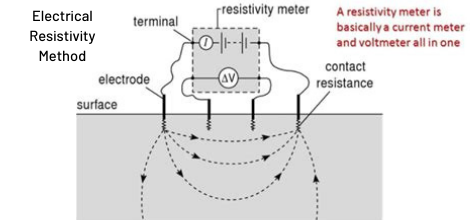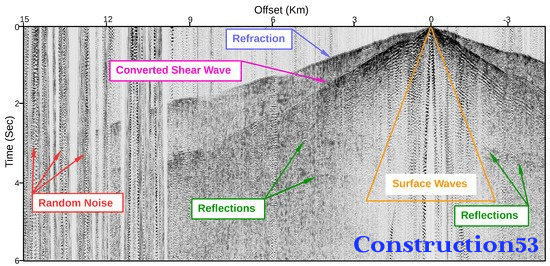Minerals are substances that we use many times in daily life. Minerals are used in the production of many technological types of equipment we use. Besides, there are minerals that are frequently used in the construction industry. Many things such as computers, mobile phones, smart televisions, automobiles, and airplanes are manufacturedthanks to minerals. Minerals such as silica, silver, quartz, iron, copper, bismuth, zinc, and halite allow the production of the mentioned tools and devices. Also, these minerals have high economic value. For this reason, minerals must be carefully searched. In this process, the earth sciences take a significant place in mineral exploration. Therefore, geophysical methods used in mineral exploration are very important.
Geophysical science is a science in which knowledge of physics, mathematics, and geology is used in an interdisciplinary manner. All underground structures can be mapped using geophysical methods. Except for some cases, geophysical methods give exact results. In mineral exploration, geophysical engineering is the primary method.
Geology and geophysical sciences are inseparable. For this reason, both disciplines should be appliedsignificantly during explorations. Well then, how is mineral exploration performed? Where do geoscientists start their mineral exploration?
If the investigated mineral is desired to have economic value, it should be an orebody. Ore bodies are large amounts of concentrated minerals. Geoscientists try to find these large bodies, therefore they use geophysical methods to find the absolute location of the ore body.
First of all, field observation is an important step in mineral exploration. Ore bodies can extend to the earth’s surface which is called an outcrop. Outcrops are good indicators for minerals.
During the field observation, geoscientists observe the rocks then if necessary they take some samples to examine them in the laboratory. After all geophysical methods used in mineral exploration can bedetermined.
Non-Invasive Geophysical Methods Used In Mineral Exploration
A geological map of the investigation area is made after thefield observation. Previously made geological and geophysical methods are examined. In addition to this, it is also important whether there was a mine or mineral deposit in the region before. If there is a mineral deposit that has been mined in the past, it is a good sign. However, a study that has no connection with the past is a new study. More than one geophysical method should be used in such a study. Mineralogical data and geological mapping give geophysicists an idea of the methods to be used. The electrical resistivity method is one of thenon-invasive geophysical methods used in mineral exploration. For this reason, it is highly preferred.
Electrical Resistivity Method
The electrical resistivity method is one of the main methods used in mineral exploration. Many minerals contain ions. The presence of these ions indicates the ability to conduct electricity. Minerals’ ability to conduct electricity allows them to be separated from surrounding rocks. This is the main reason for the success of the electrical resistivity method.
The application of the electrical method takes place by giving an electric current under the ground. Electric current is given underground by electrodes. The potential field created underground as a result of the given electric current is measured. Thanks to the measured potential field differences, information about the underground units is obtained. The electrical potential value of each mineral is different. This occupies an important place in the determination of minerals.

Electromagnetic Methods
Several electromagnetic methods are non-invasive geophysical methods used in mineral exploration. In these methods, electromagnetic waves are sent directly under the ground. The magnetic field causes electrical currents in the ore bodies. Thesecurrentscreate a secondary electromagnetic field. The necessary data is collected by measuring the secondary electromagnetic field.
In vast areas, airborne electromagnetic methods are mostly applied.
Invasive Geophysical Methods Used In Mineral Exploration
The seismic method is one of the invasive geophysical methods used in mineral exploration. Seismic methods are successful in detecting ore bodies as well as in many other fields. High-resolution underground images obtained by seismic waves provide accurate results.
Seismic Methods In Mineral Exploration
The application of seismic methods used in mineral exploration is the same as in other seismic exploration and studies. Although seismic methods are not needed in many mineral explorations, in some cases the boundaries of the ore body should be determined. Although electrical and electromagnetic methods provide data in terms of depth and width, they may not give the exact boundaries of the ore body. Also, saltwater and other toxic materials in the environment may cause difficulties in determining the borders of the ore body.

Thanks to the seismic waves sent underground, a high-resolution map of the underground can be made. Thus, elements that cause artificial decay at the boundaries of the mineral mass can also be detected.
The seismic velocity of each material is different. Although electrical conductivity can cause confusion in some cases, seismic velocities give more accurate results. Therefore, the seismic method is successful.
As with other geophysical methods, correct seismic lines should be established in the mineral exploratio. Seismic lines should be designed to cut through the ore body. This ensures more accurate results. Also, more than one line should be added at an angle close to the vertical to the seismic line.
Invasive geophysical methods used in mineral exploration are limited. This is caused by the large exploration areas. Minerals are mostly searched in large and rugged terrains. This makes it hard to take measurements by invasive methods.
How To Interpret The Results Of Geophysical Methods Used In Mineral Exploration
The number of geophysical methods used in mineral exploration can be more than one. Because the energy and investment required for the mining of the mineral involve high costs. This necessitates the use of more than one method in order to obtain precise results. The results of the electrical method, which is often used in mineral exploration, are compared with seismic data. The location, size, and mass of the ore body are determined through interrelated and meaningful data. If the correct interpretation is not made, large financial losses may occur.
